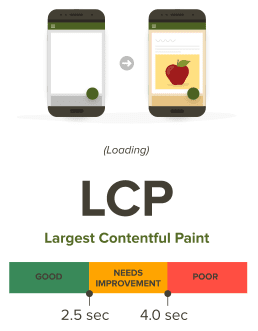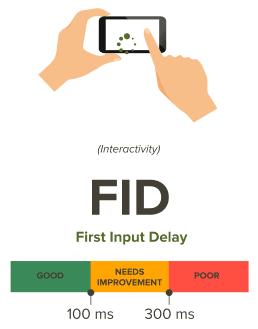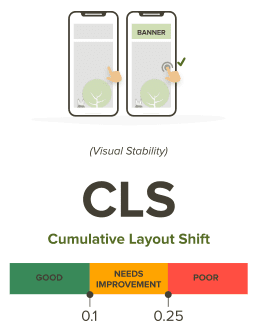01
Google Page Experience Signal and SEO
02
Optimizing for the Google Core Web Vitals Update
03
Other Page Experience Ranking Signals
04
How to Optimize Website for User Experience
05
Case Study: Friendsco Tech Internet Marketing Agency Website
06
Page Experience FAQs
On June 15, Google began rolling out its new ranking factor, Google Page Experience, highlighting the need for a comprehensive site-wide audit and a user-centric approach to SEO and web development. While this update will fully integrate into Google’s ranking signals by the end of August, its gradual rollout allows businesses some time to adapt.
As Google explained,
“Think of it like adding seasoning to a dish. Instead of mixing all the flavor at once, we’re gradually incorporating it over this period.”
If your website hasn’t been optimized for the Google Page Experience Guide, you may already be lagging behind competitors who’ve spent months preparing for this shift.
Google first announced in November 2020 that website user experience (UX) would play a key role in search rankings. Now, the Google Page Experience Update combines Core Web Vitals with existing Google UX signals – such as mobile-friendliness, HTTPS, and minimal intrusive interstitials – to assess a web page’s usability, interactivity, and search ranking.
Partner with FriendCo Tech to ensure your website is fully optimized for this critical update and stays ahead in the competitive SEO landscape!
On August 3, 2021, Google announced the removal of Safe Browsing as a page experience ranking signal, acknowledging that issues related to Safe Browsing are often beyond a website owner’s control. In its statement, Google explained:
“Sometimes sites fall victim to third-party hijacking, causing Safe Browsing warnings to appear. We understand these issues aren’t always within site owners’ control, so Safe Browsing is no longer used as a ranking signal or included in the Page Experience report.”
While Google Search Console (GSC) will continue to flag Safe Browsing issues, they will no longer influence Page Experience rankings.
If your site isn’t optimized yet, now is the time to act. Addressing all Google Page Experience ranking signals can take 15–40 days or more, depending on the complexity of your website. Additionally, changes often require a 28-day period to reflect in search results, with ranking updates typically occurring on the second Tuesday of every month.
A Screaming Frog study found that, as of August 2020, fewer than 15% of websites met the benchmarks outlined in the Google Page Experience Guide. More recently, Searchmetrics revealed that only 4% of websites pass the Core Web Vitals tests.
With such a small percentage of websites meeting Google’s Page Experience standards, it’s essential to revamp your technical SEO strategy. Focus on creating a responsive website design that prioritizes a seamless user experience to stay ahead of the competition.
At FriendCo Tech, we specialize in optimizing websites for the Google Page Experience Update, helping you enhance your rankings, boost traffic, and drive more leads and conversions. Partner with us to deliver an exceptional user experience and achieve long-term success in the ever-evolving SEO landscape!
Google Page Experience Signal and SEO
Is your website stuck on the second, third, or even fourth page of search engine results (SERPs) despite your best on-page SEO efforts? The issue could lie in your website’s user experience.
Google’s mission is clear: to make information universally accessible while ensuring users enjoy a high-quality on-page experience. For some time now, Google has factored in key ranking signals such as click-through rate (CTR), dwell time, and bounce rate to determine how well web pages should rank in search results.
If visitors land on your website and leave due to a poor page experience, Google may interpret it as a sign that your site isn’t delivering sufficient value. This makes it even harder for your website to climb the ranks in search results.
Ensure your website meets modern UX standards with FriendCo Tech. Let us help you enhance your user experience, retain visitors, and improve your search rankings!
With the rise of mobile traffic and searches, Google has placed even greater emphasis on website user experience. In May 2020, Google announced a major update designed to merge Core Web Vitals with existing UX-focused ranking signals. This update provides a clearer view of a web page’s overall user experience while identifying issues that may prevent users from accessing high-quality information online.
Google has highlighted six key ranking signals that form the foundation of this update:
Largest Contentful Paint (LCP)
Cumulative Layout Shift (CLS)
HTTPS
Mobile Friendly
First Input Delay (FID)
No Intrusive Interstitials
To secure better rankings on search engine results pages (SERPs), it’s essential to adopt and implement each core ranking signal. These signals ensure your website is properly crawled and indexed by Google, setting the foundation for improved visibility and search performance.
At FriendCo Tech, we focus on aligning your website with Google’s latest ranking standards, helping you achieve top-tier results while delivering a seamless user experience. Let us optimize your site to meet every ranking signal and stay ahead in the competitive SEO landscape!
What Is Google Page Experience and Why Does It Matter in Technical SEO and Responsive Web Design and Development?
Google defines page experience as:
” a set of signals that measure how users perceive the experience of interacting with a web page beyond its pure information value.””
User experience is now a crucial factor in page quality and Google rankings. Along with creating high-quality, accessible content, technical SEO experts must also prioritize performance optimization and Core Web Vitals compliance.
Maintain a responsive website design
Improve Google usability
Prioritize Google page speed
Pass the Google performance test
These Google user experience best practices empower web developers and technical SEO experts to craft meaningful website experiences and define user journeys that drive online success.
With the latest Google update now in effect, the new Page Experience ranking signals are part of the many factors influencing search rankings. Understanding Google’s Core Web Vitals and their impact on SEO is essential for optimizing your website and staying ahead in search results.
How Big of an Update Will the Google Page Experience Be?
Google gave us a rare one-year heads-up for the Page Experience Update, signaling how significant its impact will be on your technical SEO, responsive web design, SERP rankings, and ultimately, your online revenue.
Experts warn that failing to prepare for this update could lead to a 100% drop in website rankings, along with a severe decline in traffic and conversions.
Screaming Frog’s research on 2,500 keywords and 20,000 URLs revealed that
- only 12% of mobile and 13% of desktop results passed Google’s Core Web Vitals performance test.
- Additionally, URLs in position 1 on SERPs are 10% more likely to have a strong Core Web Vitals score compared to those in position 9.
The Google update is already affecting both mobile rankings and desktop search performance. With only a small percentage of websites passing Google’s user experience test, it’s clear that most website owners and technical SEO experts will need to significantly boost their optimization efforts to align with the latest Google algorithm update.
How Big of an Update Will the Google Page Experience Be?
Websites must optimize for all Google Page Experience ranking signals and meet the minimum thresholds for all three Core Web Vitals to earn a ranking boost.
With a 28-day turnaround for changes to take effect, delaying your website’s user experience optimization could harm your rankings and search performance. By that time, it may be too late to implement the necessary updates to achieve a strong score on Google Core Web Vitals and pass the Google performance test.
What Is User Experience?
User experience (UX) is a human-centered approach to responsive web design that focuses on the complete interaction a user has with a company, product, or service. Simply put, UX covers everything related to how users feel and behave while interacting with a website or application.
Google’s user experience best practices aim to enhance the quality of user interaction with your site, creating a seamless and engaging experience that helps visitors fulfill their online needs. To achieve this, you must understand what user experience is, know your target audience, and optimize your user experience design (UED).
With the latest Google update now in effect, the new Page Experience ranking signals are part of the many factors influencing search rankings. Understanding Google’s Core Web Vitals and their impact on SEO is essential for optimizing your website and staying ahead in search results.
What Is User Experience Design?
User experience design (UED) is the process of crafting a website that delivers a meaningful and relevant Google user experience. It takes into account all the elements that influence user interaction, including:
Site usability
Design
Navigation
Page load speed
Mobile experience
Impression
The ultimate goal of user experience design is to accommodate all potential user limitations while prioritizing their needs in every aspect of responsive website design.
It’s important not to confuse Google user experience with user interface (UI). While some marketers use UI and UX interchangeably, they are distinct concepts with key differences.
User Interface vs User Experience
User interface (UI) refers to the visual elements, such as buttons, icons, and gesture controls, that allow users to interact with your website. Your website’s UI should be as simple and responsive as possible to enhance user interactions and convert visitors into paying customers.
While UI acts as the control system that leads users to their destination, user experience (UX) is the feeling users have when they arrive.
Understanding the difference between UI vs UX is essential for hiring the right talent to develop and optimize your website for Google Core Web Vitals and other SEO updates. More importantly, this knowledge helps you create a positive first impression and deliver an excellent Google user experience.
It’s important not to confuse Google user experience with user interface (UI). While some marketers use UI and UX interchangeably, they are distinct concepts with key differences.
What Is a Rich Web Experience?
Peter Morville, a pioneer in information architecture and user experience, highlights six essential facets of a meaningful, valuable, and rich web experience. He represents these aspects through his User Experience Honeycomb, which includes:
With Google’s latest update, the definition of a good user experience has evolved. In addition to content quality and accessibility, Google now also considers Core Web Vitals and other page experience ranking signals when evaluating a website’s value, Google web rating, and SEO performance.
Optimizing for the Google Core Web Vitals Update
- What Are Google Core Web Vitals?
- Why Does the Google Core Web Vitals Update Matter in SEO?
- How to Collect Web Vitals Report?
- How to Improve Core Web Vitals?
What Are Google Core Web Vitals?



Google Core Web Vitals are key metrics that emphasize page loading speed, user interactivity, and visual stability, ensuring an optimized user experience. This update by Google establishes standardized benchmarks critical for delivering a seamless web experience.
At FriendCo Tech, we prioritize these three essential aspects of Core Web Vitals to enhance your website’s performance and user engagement.
1.
Largest Contentful Paint (LCP)
2.
Cumulative Layout Shift (CLS)
3.
First Input Delay (FID)
Why Does the Google Core Web Vitals Update Matter in SEO?
The Google Core Web Vitals update prioritizes high-quality, fast-loading, and mobile-friendly websites, boosting their Google page rankings and visibility to a larger audience,” said FriendCo Tech’s technical SEO specialist.
With these enhanced core ranking signals, you can:
Identify the number of pages on your website that require optimization for better performance.
Evaluate your web pages to determine which deliver a good user experience and which need improvements.
Enhance user experience to boost site performance and align with Google’s usability standards.
Prioritize creating a high-quality, responsive website design to enhance user experience and engagement.
Ensure compliance with Google's guidelines to avoid potential penalties and maintain strong search rankings.
Optimize your website to stay ahead of future Google algorithm updates and maintain strong search performance.
How to Collect a Core Web Vitals Report
There are two methods you can employ to view your Core Web Vitals report: field data and lab test data gathering.
What Is Field Data Gathering?
Field data gathering uses Real User Metrics (RUM) from the past month, factoring in users’ location and device, to deliver accurate insights into website user experience over time. This data also plays a key role in determining Google page rankings.
These are the different tools to measure Core Web Vitals field data:
Chrome UX Report (CrUX):
CrUX, accessible via BigQuery and CrUX API, offers a convenient way to evaluate Google Web Vitals, conduct competitor analysis, and perform market assessments. It allows filtering results by country, device type (form factor), and connection type.Limit: The CrUX API operates on a 28-day rolling average.
Google Search Console (GSC):
Previously known as Google Webmaster Tools, GSC is a free platform that provides detailed insights into Google Search performance, Page Experience, and Core Web Vitals reports using CrUX field data. It helps you track Google web ratings, the percentage of URLs with a good page experience, the number of URLs with issues, and Core Web Vitals scores for both mobile and desktop on Chrome.Limit: Changes or updates made to a website take over a month to reflect in Google Search Console.
PageSpeed Insights:
PageSpeed Insights provides both field and lab data for mobile and desktop devices, helping you analyze your website’s performance. It also shows whether your site has passed the Core Web Vitals assessment over the last 30 days.Limit: Operates on a 28-day rolling average for field data.
Web Vitals Extension:
This Chrome extension measures Google Core Web Vitals in real-time on desktop, making it a recommended diagnostic tool for monitoring Core Web Vitals during the web development process.Limit: The metrics are influenced by the user’s device and internet connection.
What Is Lab Test Data Collection?
Lab test data uses controlled settings to approximate user experience based on assumed user data. This method is essential for diagnosing web issues and identifying bugs, as the testing environment can simulate various scenarios and provides immediate feedback.
These are the tools to measure Core Web Vitals in the lab:
Lighthouse:Lighthouse evaluates page performance and accessibility based on the majority of site visitors or your upper percentiles. Similar to PageSpeed Insights, it provides actionable recommendations to optimize websites for a better user experience.
Limit: Lighthouse operates only at the URL level.Chrome DevTools:Chrome DevTools identifies unexpected layout shifts, image shifts, and input lag to enhance the user experience.
Limit: Uses Total Blocking Time (TBT) as an estimate for First Input Delay (FID).
How to Improve Core Web Vitals
1.
Remove unused JavaScript from files.
3.
Serve images in next-gen formats like JPEG 2000, JPEG XR, or WebP
5.
Avoid large JavaScript libraries by adding local CSS and JS libraries.
7.
Avoid non-composed animations.
2.
Add encoded SVG images in CSS as background images.
4.
Eliminate unused icons to reduce the Document Object Model (DOM) size
6.
8.
Why Optimize for the Google Page Experience Guide?
According to the CEO and Founder of the Friendsco Tech, emphasizes that optimizing for the Google Page Experience Guide is crucial to outpacing competitors and delivering an exceptional user experience. Not updating your website can be especially harmful to eCommerce and lead-generation sites, as increased visitor bounce rates mean lost opportunities to present your unique value proposition (UVP), market your brand, and attract more customers.
Here are additional reasons to start preparing for the Google core update now:
Potential customers may migrate to competitor websites offering a superior user experience.
Not optimizing for the Google algorithm update can result in reduced leads, sales, and conversions.
A poor Google user experience can damage your website's reputation.
Achieving high scores on Google’s mobile speed test is challenging, and the Google Page Experience Guide has made it even more difficult.
Optimizing your website for the Google update can improve your rankings and visibility in SERPs.
If your competitor’s site loads in under one second while yours takes five seconds, your bounce rate is likely to rise.
Using Google Search Console to Monitor Website Performance
- Submit new web pages for Google to crawl.
- Remove content you don’t want search engines to index.
- Detect and eliminate malware or spam issues.
- Ensure Google can access your site content.
- Identify issues impacting your Google mobile ranking and desktop performance.
- Determine the percentage of URLs with a good page experience.
- Track the total impressions of high-performing URLs.
- Monitor Page Experience signals.
How to Optimize Website for User Experience
1.
Use concise messages like inlines, banners, and slide-ins for mobile pages.
3.
5.
Ensure your website is responsive and mobile-friendly.
7.
Check for site vulnerabilities.
9.
Fix security issues.
11.
1.
Use concise messages like inlines, banners, and slide-ins for mobile pages.
4.
6.
8.
Update all plugins, themes, PHP version and WordPress version.
10.
Minify CSS.
12.
Consult technical SEO experts and responsive web design specialists.

